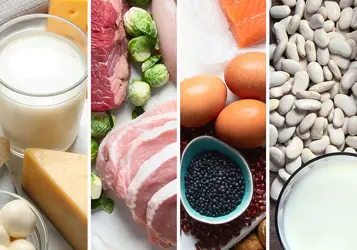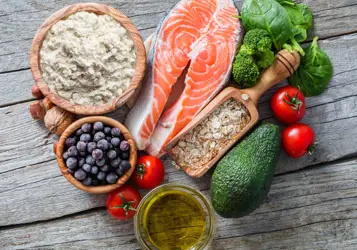In my previous article on The Whey & Protein Blog, I spoke about the rise of the DIAAS (digestible indispensable amino acid score) method to usurp the protein digestibility corrected amino acid score (PDCAAS), as the gold standard means of determining protein quality. I also explained how the international collaborative Proteos research project is progressing into its second phase to demonstrate the practical value of “predicted human” amino acid digestibility values from a routine pig model. In this piece, I would like to focus on its potential rollout, particularly from a product development standpoint, and what blends of plant-based proteins and dairy proteins, such as whey, could mean for optimized protein scores.
Closing the available protein shortfall
As I alluded to in my previous piece, DIAAS could prove to be really helpful in dispelling the popular myth that people all around the world are consuming enough protein. Simplistic arguments based on quantity are quickly quashed, once quality is brought into the equation. For when the numbers are reassessed for availability, people in more than half the countries of the world are protein deficient. For example, while the average Indian adult may be getting just above the protein quantity they need while following a plant-based diet, if you multiply the amount by the DIAAS value of 0.7 (a measure of the utilisability of the protein), you will find that they are deficient in the available protein they actually need or use.
There is a clear global shortfall that needs to be closed to combat a serious public health crisis. However, at the same time, providing the world’s growing population solely with amino acid rich animal and dairy proteins would not work either, due to both practical and environmental concerns. This is why it’s so important to look at the issue more holistically and also rely on innovative product developers to come up with forward-looking concepts that combine proteins. The DIAAS method will provide innovators with a validated opportunity to sustainably close the shortfall of product compositions by optimizing amino acid scores through fortification with other proteins, including whey.
Broad industry support for DIAAS
Industry interest in the DIAAS method has been strong across the board as it presents new opportunities. Dairy protein suppliers will undoubtedly have a lot to gain from the method, so their strong levels of interest are unsurprising. But a lot of plant-based industries have been positive too, as the new method provides greater clarity. For example, in the future, a food manufacturer using soy could confidently claim to be using “the protein king of the plants.”
But even in the case of some of the poorer quality protein foods out there, there are opportunities, if their product is promoted as part of a varied diet. For example, beans may in themselves be of low protein quality, but when placed into a mixture with another protein (e.g. egg) this shortfall will be closed. The dawn of DIAAS could be an opportunity for bean suppliers to recognize that their products are not protein powerhouses in themselves, but are instead a rich source of valuable fibre, phytochemicals, minerals and other nutrients. DIAAS clarification will help them to identify specific opportunities to use their products effectively in part of a broader matrix, or indeed a balanced diet.
DIAAS draws attention to the fact that many plant proteins are low in protein quality, but it also highlights that they are often only limited by their lack of one or two key amino acids. Animal proteins will, on the other hand, often be very high in those amino acids, but lower in fibers and other beneficial compounds. By getting the right mixture of plant proteins and adding just a little bit of animal protein, you can suddenly get a much better protein product.
Work in this area will allow for the broader incorporation of proteins and lead to a very efficient use of plant proteins. In this way, the consumer can benefit from the inherent fibre, phytochemical, mineral and other nutrient composition of the plant-based protein, and also receive the amino acid requirements as a convenient package through the addition of options such as whey protein concentrate.
A wealth of innovation possibilities
But this type of development goes beyond addressing nutritional shortcomings alone. On the one hand, DIAAS will inspire the optimal mixing of protein concentrations to arrive at the right amino acid balance. The other side of the equation is that since you are bringing these different materials together, you can look at how to process them in different ways and create foods with entirely new characteristics.
The rise of DIAAS will lead to enormous potential for new co-processed foods that blend plant-based proteins, as well as those fusing animal and plant-based proteins, to truly get the best of both worlds. This work has the potential to lead to the design of high protein foods with new physicochemical functionalities. Optimal blending of proteins will lead to the creation of entirely new types of foods, including gels, liquids and solids materials, which can be processed at different temperatures. It would result in innovative foods with entirely new organoleptic properties and characteristics e.g. fluffiness and stickiness. You could, for example, end up with a product boasting an entirely new nutty flavour, as a result of combining and processing the proteins in an innovative way.
Again, these types of developments could be a further opportunity for whey protein. This product is very high in certain amino acids and can be useful as a supplementary protein in small amounts. It is also a protein that can bring about new functionalities into a product, including colour, texture, chewability, and how the product would react when cooked.
It’s time to start communicating
Now that DIAAS is close to widespread adoption, the need to start communicating around protein quality and amino acid content is key, particularly in highlighting the benefits of blends. The model means that scores can be calculated for both single foods and mixed-food diets to ascertain the overall protein quality.
But we need to recognize the challenge in communicating around how one specific food can have a different protein quality, when used singly or in a mixture. While a company could claim, for example, that a bean protein has a low protein quality and whey protein has a high protein quality, that may be unfair if the particular matrix has not been taken into account and the amino acid composition has been optimized. Somehow, the general public, needs to be presented with simple messages about what foods they eat and the protein values that accompany them. It’s time to start thinking about the best approaches to this.
As the world’s population continues to grow and the debate around sustainable nutrient production intensifies, validated data that demonstrates what optimal protein quality should be will intensify. The rise of DIAAS will open up a wealth of new opportunities for product technologists to combine proteins for optimal profiles and quality. But great communication will be key to dispel popular myths and underpin the importance of high-quality proteins, in a mixed diet.
This blog contains material and information intended for B2B customers, suppliers and distributors, and is not intended as information to the final consumers.
























